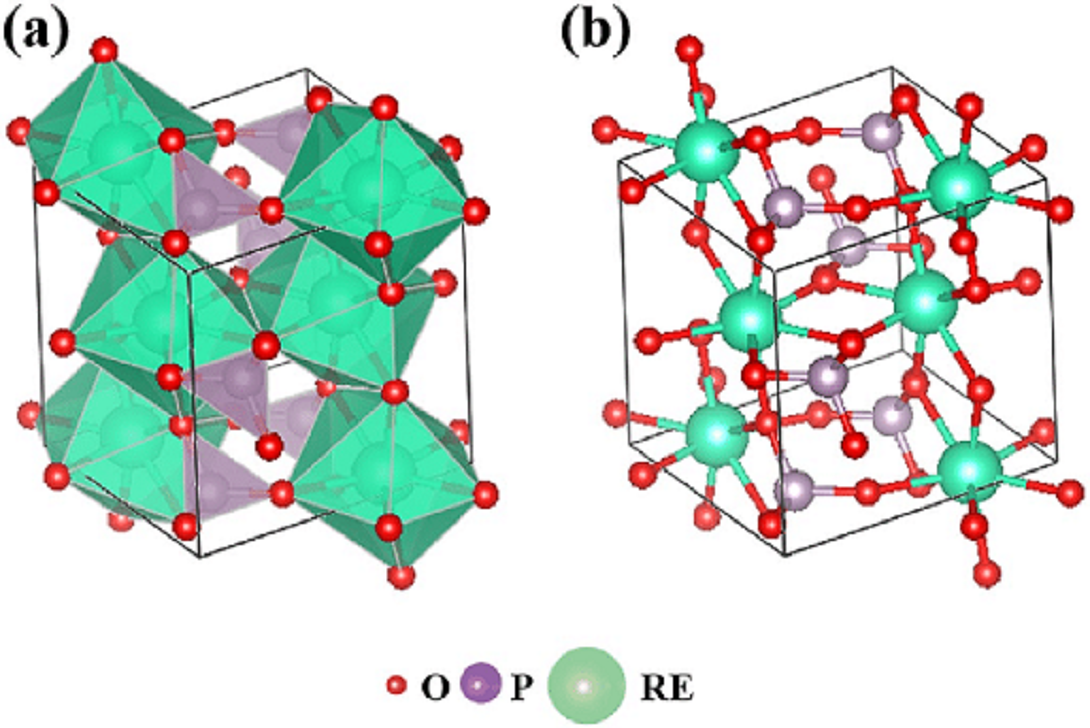Rare Earth Phosphates: Diverse Structures, Similar Irradiation Response
Rare Earth Phosphates: Diverse Structures, Similar Irradiation Response Heading link

Diverse structure types for rare earth element phosphates yield similar amorphization behavior under ion irradiation, despite very different structures and responses to compression.
Rare earth element (REE) phosphates are an attractive host material for the long-lived decay products found in spent nuclear fuel due to their high radiation tolerance. REE phosphates adopt different structure types (Fig. 1) depending on the size of the rare earth element — lighter, larger rare earth ions are stable in the monoclinic monazite structure, while heavier, smaller rare earth ions prefer the tetragonal xenotime structure. Results from X-ray diffraction studies at high pressure show that these different structure types respond very differently to compression, which raised the possibility that their behavior under irradiation by energetic heavy ions would also be distinct.
Using one of the world’s largest ion accelerators at the Helmholtz Centre for Heavy Ion Research (Darmstadt, Germany), a group including CDAC Academic Partner Maik Lang, former CDAC students Will Cureton and Raul Palomares, and current student Cale Overstreet, along with colleagues from the Institute of Energy and Climate Research (Jülich, Germany), the Karlsruhe Institute of Technology (Karlsruhe, Germany), and Stanford University have studied the response of SmPO4 (monazite structure) and TbPO4 (xenotime structure) under intense heavy ion irradiation. The work aims to model how robust these structures are in response to intense radiation and to evaluate their potential stability in a nuclear waste storage environment.
Transmission electron microscopy shows that both materials lose crystallinity under irradiation in a very similar manner, experiencing some degree of amorphization. The local structural arrangement within the amorphous region is also retained in both materials as confirmed by Raman spectroscopy, suggesting that, despite their different structures, changes in chemistry that might take place within nuclear waste forms will not dramatically affect these materials’ responses to ion irradiation.
Overstreet, C., J. Cooper, E. O’Quinn, W. Cureton, R. Palomares, J. Leys, G. Deissmann, S. Neumeier, C.-H. Chen and M. Lang, Structural stability of REE-PO4 (REE = Sm, Tb) under swift heavy ion irradiation. Nuclear Instruments and Methods in Physics Research B, 527, 34-39 (2022).